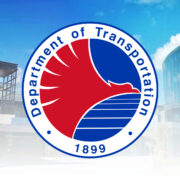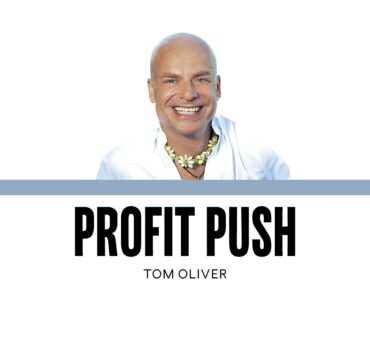‘Bata. Bayan. Bukas.’–A business case

In April 2023, Management Association of the Philippines (MAP) launched its Campaign Against Malnutrition and Child Stunting (Camacs) because we believe that our children today, especially those growing up in poverty, need investments in their nutrition, health, education and wellness so that they can reach their full potential as healthy, skilled adults who are able to improve their quality of life.
We are thankful that when MAP took on the role of convenor, more than 70 organizations responded, committing their resources and their willingness to help implement the programs that can help reduce and eventually eradicate malnutrition and child stunting.
But due to the magnitude of the undertaking and the fact that it is MAP’s first time to take on a social cause of that scale, we barely inched up, except on that aspect that we are good at—that is, creating national awareness of the existence of this problem.
But we have a vital and indispensable role in this fight—and staying committed is not just morally right, but also smart business.
And we are glad that MAP, through the MAP Research and Development Foundation, has committed to supporting this project.
Also, about a month ago, the same team was given the go signal to proceed with “Camacs Phase 2.”
Indeed, why should the business community take this on with dedication and full commitment? Because malnutrition is not just a health issue—it is an economic one.
It quietly erodes our workforce productivity, drags down our gross domestic product (GDP), and diminishes the potential of our next generation.
Addressing it is not charity; it is one of the highest-return investments we can make.
Globally, the numbers remain staggering.
Unicef reports that 148 million children under five are stunted, 45 million are wasted, and 37 million are overweight.
This so-called “triple burden” of malnutrition costs the world trillions annually in lost productivity and health-care expenditures.
The Philippines reflects this challenge.
Stunting—a condition caused by chronic under-nutrition—affects 23.6 percent of our youngest citizens.
And once it sets in, it is largely irreversible. It impairs cognitive development, weakens immunity and limits educational attainment. It is not just a health statistic. It is a lifelong economic penalty.
We are falling behind our Association of Southeast Asian Nations (Asean) neighbors. Thailand’s stunting prevalence is 11 percent, Vietnam’s is 19 percent, while ours remains stubbornly high at 26 percent.
What does this mean in economic terms?
According to the Cost of Inaction Tool by Nutrition International (2023), the Philippines may be losing about $8.5 billion annually (P496 billion)—roughly 2 to 3 percent of GDP—due to under-nutrition, including stunting, low birthweight and anemia. (BusinessWorld Online).
That is billions of pesos lost—through reduced productivity, higher health-care costs and lower educational outcomes. For stunted children, studies show lifetime earnings can be up to 22 percent lower.
That is human capital leakage we simply cannot afford.
The good news is that solutions are known, cost-effective and yield very high returns.
In the Philippines, there has been a significant improvement from 34 percent (one in every three children) in 2015 to 23 percent (one in every 4 children) in 2023.
And that is the reason why MAP remains steadfastly committed to Camacs with the hope that no child will be wasted.
The Copenhagen Consensus estimates that every dollar invested in nutrition can generate up to 16 dollars in economic benefits.
The business sector, especially with MAP’s demographics that count the top industry leaders as members, can do a lot more.
There are simple ways that could easily be adopted in our organizations. For instance, we can:
1. Include nutrition not just as a Corporate Social Responsibility project but in our supply chain, product designs and workforce policies.
2. Support breast-feeding and maternal health programs within our operations, inside our workplaces, in our communities.
3. Make our products into healthy diets that are more affordable.
4. Help shape policy reforms, such as tax incentives, food standards, subsidies, among others.
5. Be partners in public-private platforms, such as nongovernmental organizations, government, communities—and align programs with national plans, like Philippine Plan of Action for Nutrition.
MAP is relentless in this advocacy, treating this as a continuing program, ensuring this by placing the Camacs as one of the important initiatives of the MAP Research and Development Foundation.
Using the same template we have designed in Phase 1 in 2023:
• We can continue our role as a Convenor and be the clearing house of synergy and collaboration for the different players.
• Keep the momentum of the conversation using MAP’s visibility as an advantage to generate awareness and continuing engagement through regular releases, forums, policy advocacies and persistently push for public reforms and actions.
For this reason, we will step up some more. For Phase 2, we will line up continuing efforts to push Camacs.
Beyond CSR, nutrition investments make strategic sense. A healthier workforce is more productive, innovative and competitive. Malnutrition is not only about hunger—it is about lost potential.
Lifted from the presentation of the author during the Management Association of the Philippines (MAP) General Membership Meeting on Oct. 8, 2025. The author is chair of the Camacs Committee and past president of MAP. She is the founding partner and CEO of Du-Baladad and Associates or BDB Law
Benedicta Du-Baladad is president of MAP and the founding partner and CEO of Du-Baladad and Associates or BDB Law. Feedback at map@map.orh.ph and dick.du-baladad@bdblaw.com.ph.





















Can blockchain make the national budget tamper-proof?